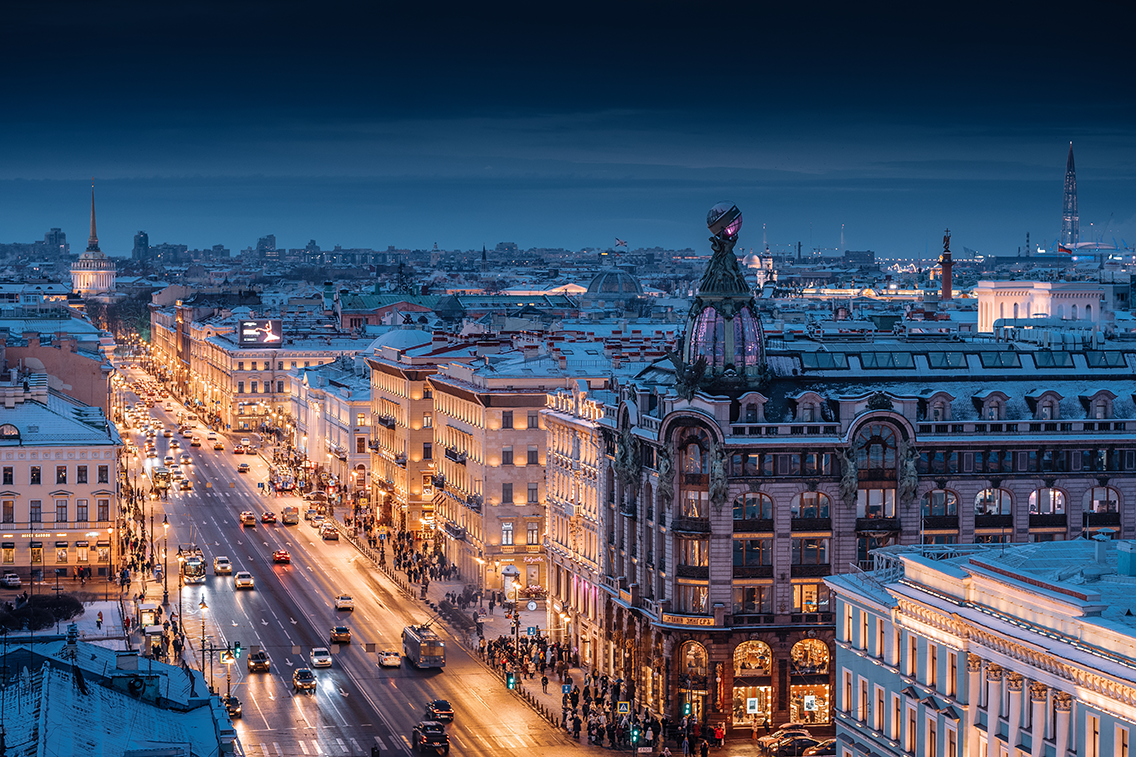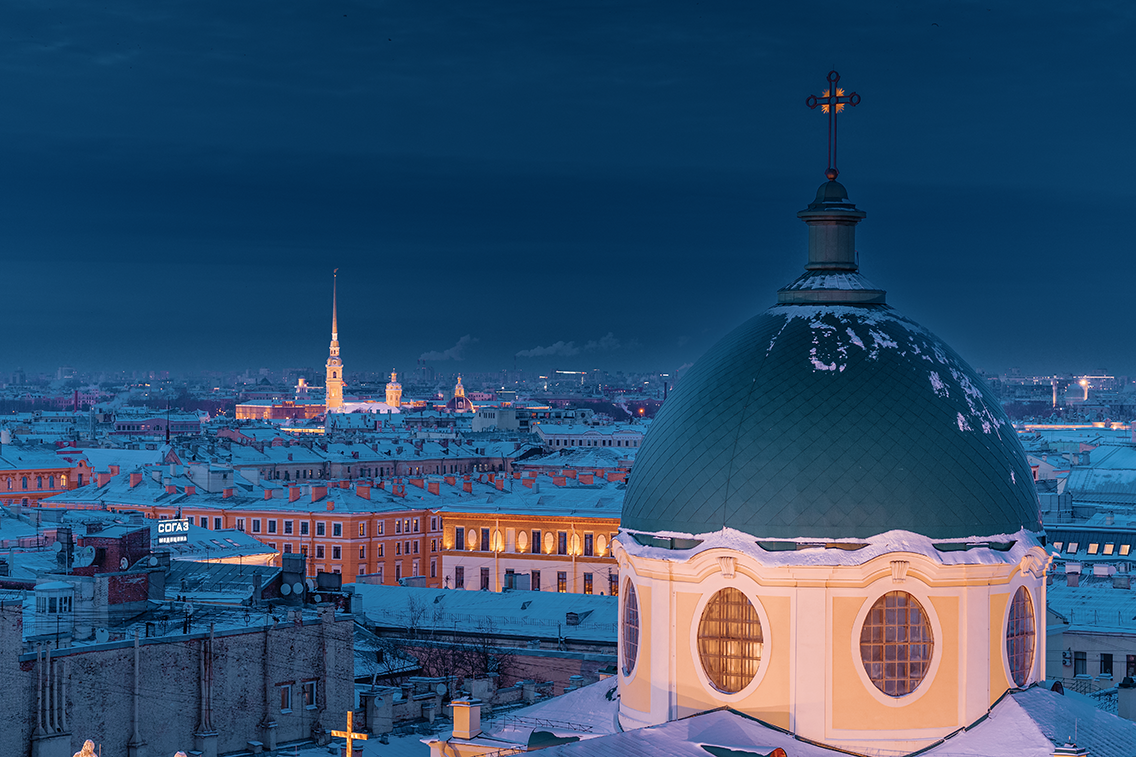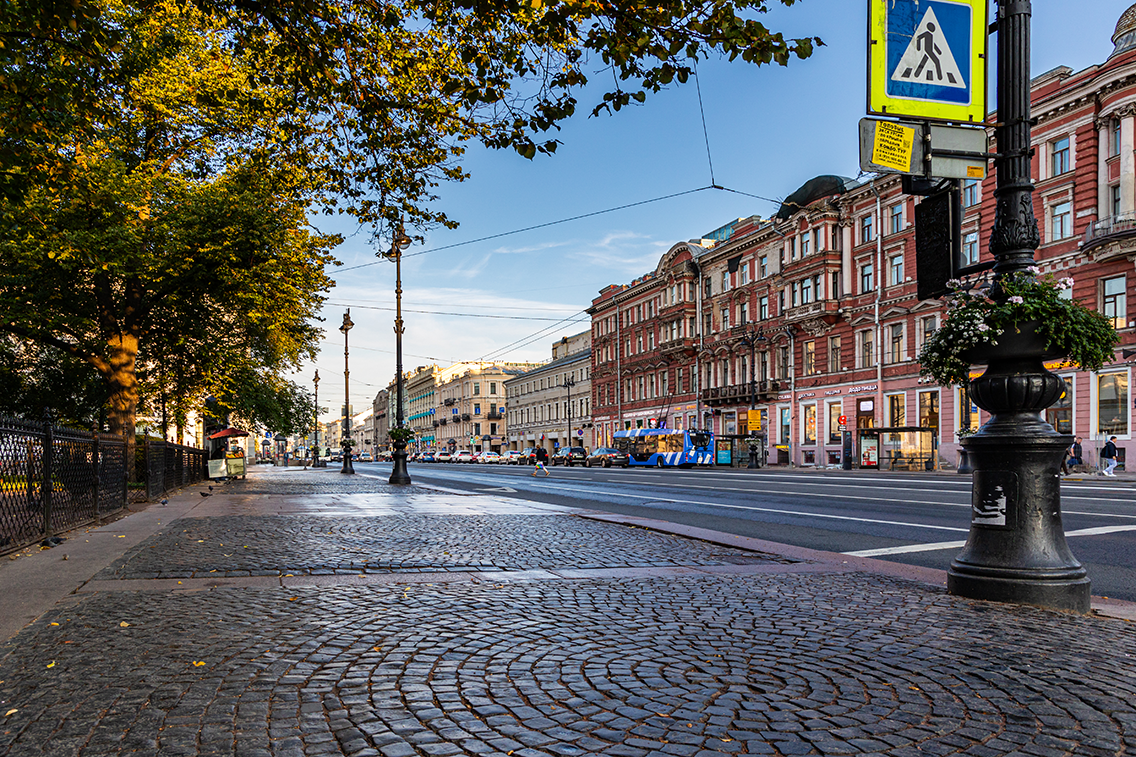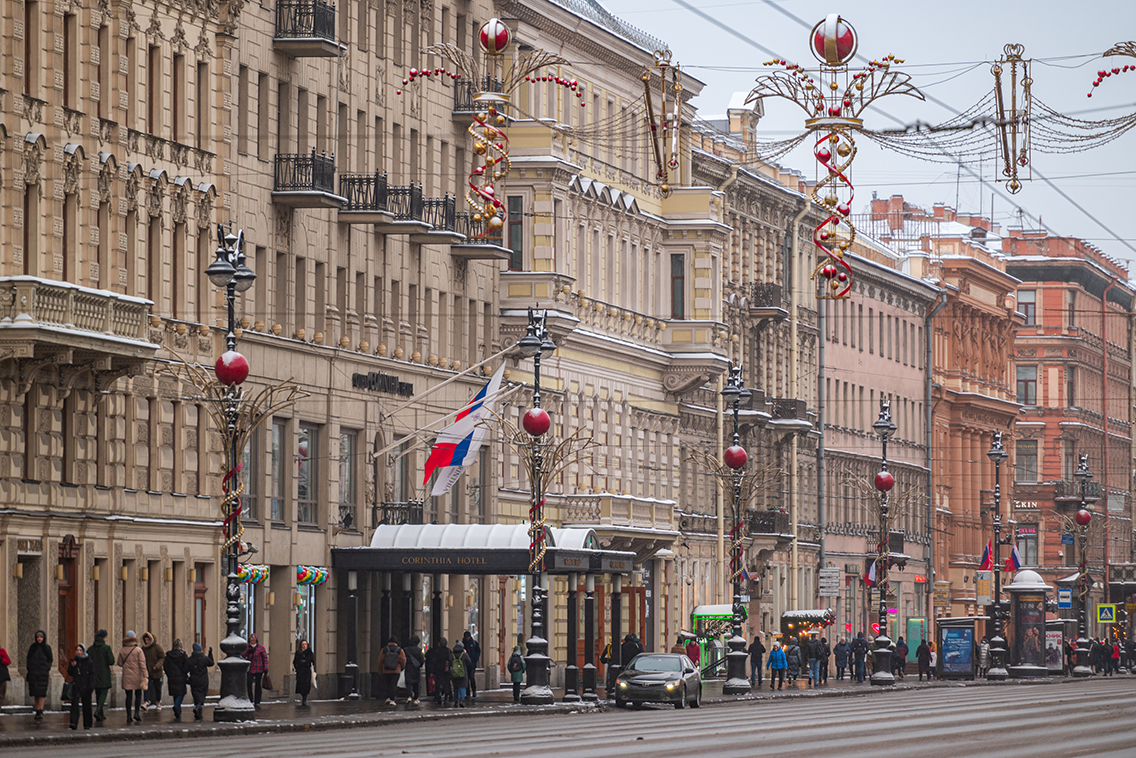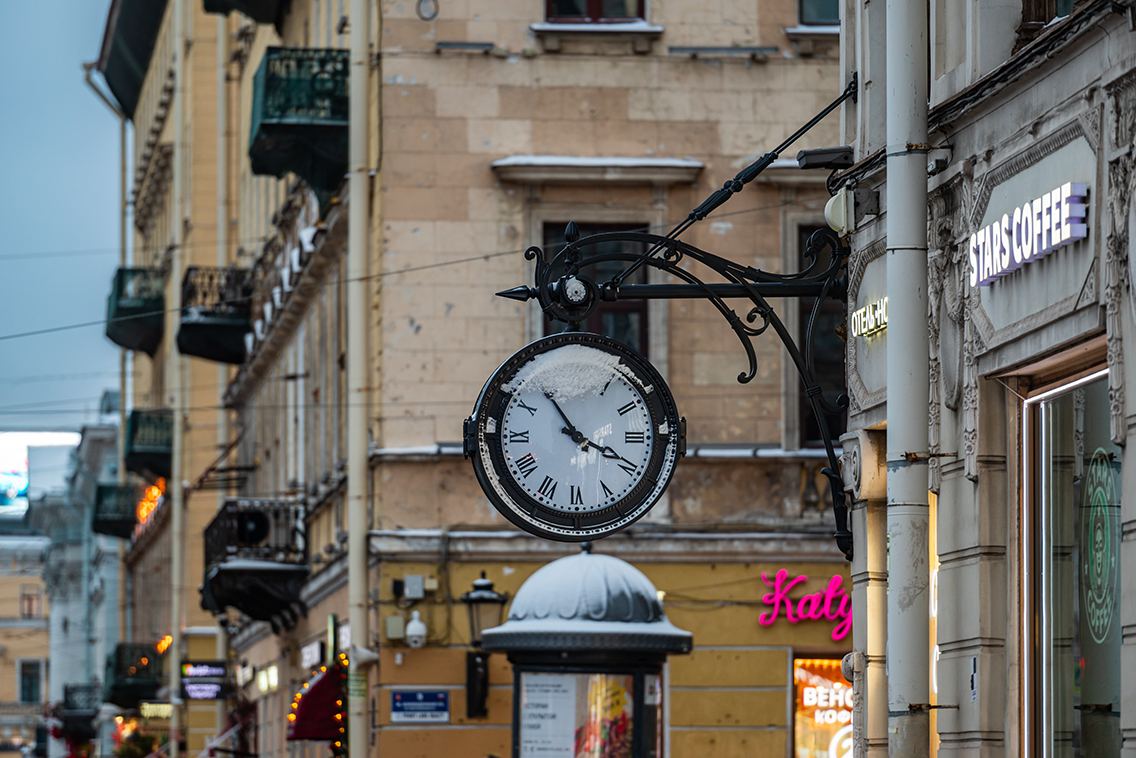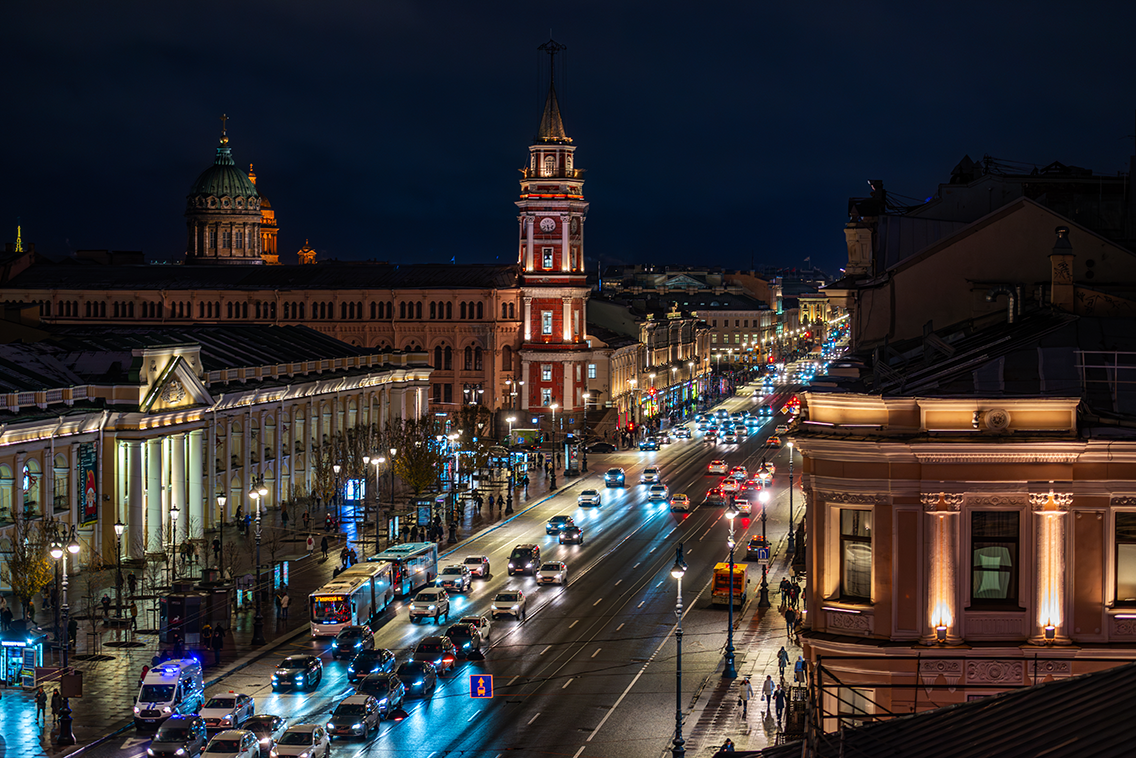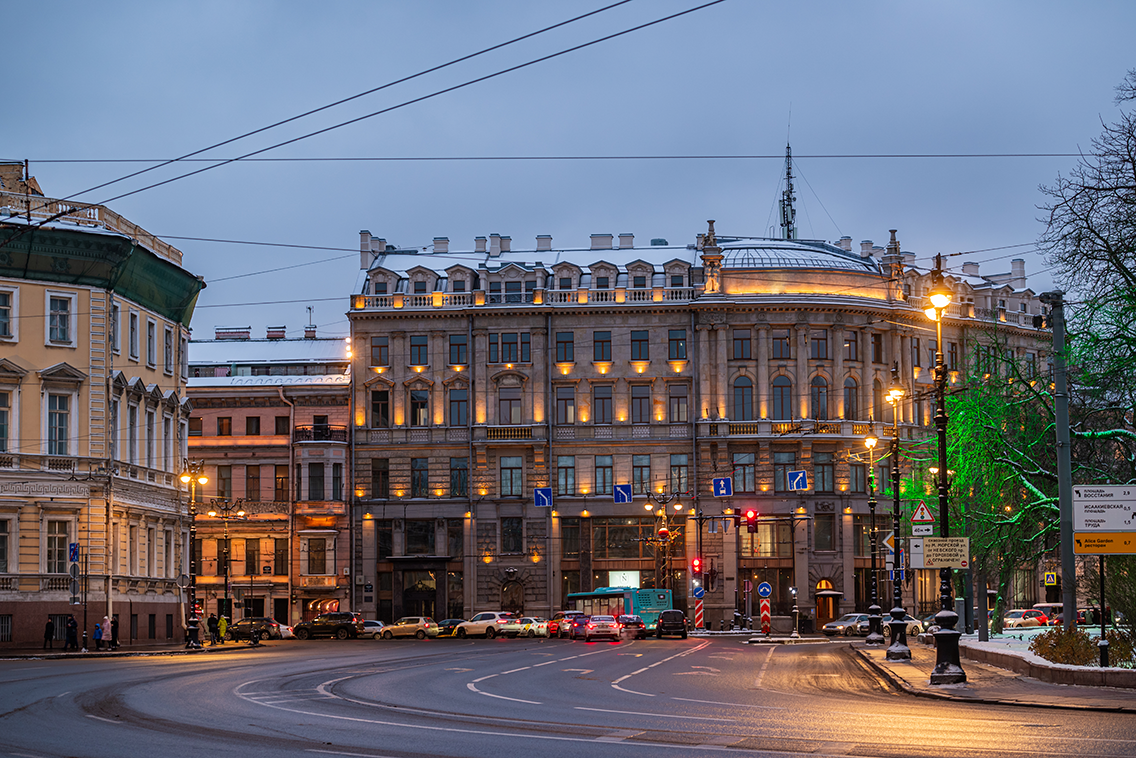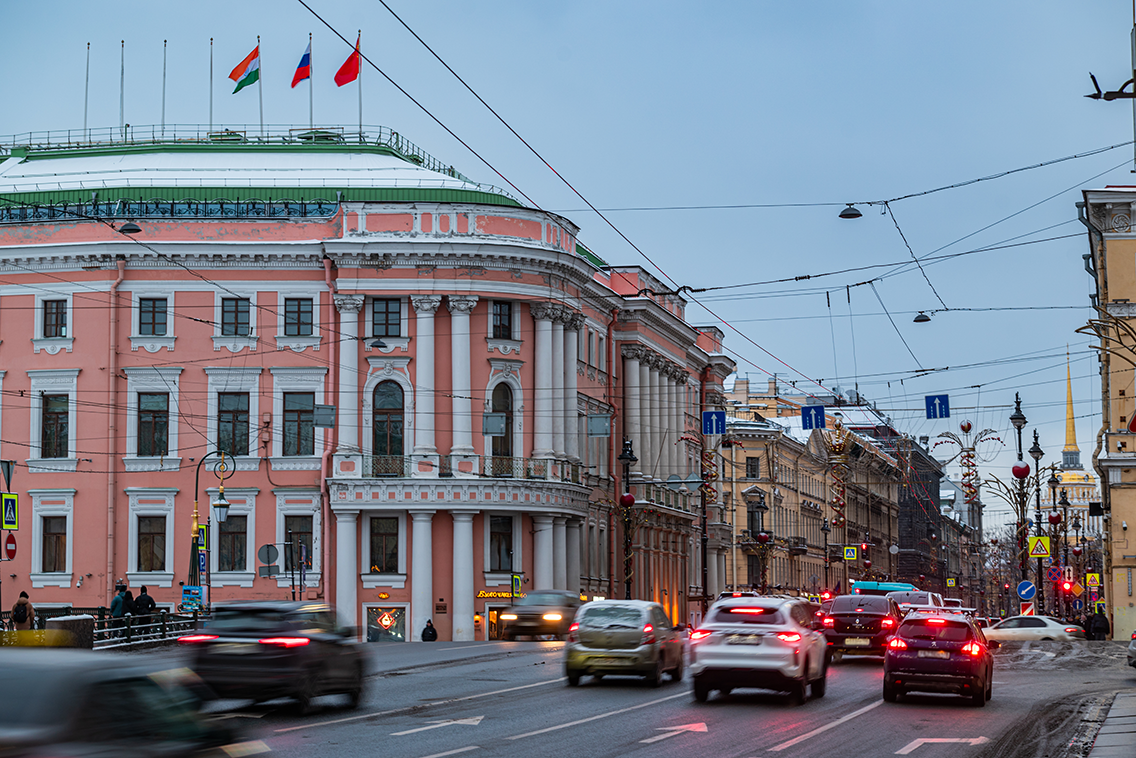 Back
Back
Nevsky prospekt

Nevsky pr.
The city’s main thoroughfare stretches for more than four kilometers from Admiralteisky Prospeсt and Palace Square to Alexander Nevsky Square. Nevsky Prospect is the centre of the cultural and social life of Saint Petersburg.
Many museums, theaters, concert halls, cinemas, libraries, shops, cafes and restaurants are located along Nevsky Prospect or near it.
Architectural appearance of Nevsky Prospeсt is rich and diverse, and at the same time can be characterized by unity and completeness. The perspective of the street’s main section ends with a tower and the golden "needle" of the Admiralty on one side and with an obelisk to the Hero City of Leningrad on Vosstaniya Square on the other.
The prospect has witnessed many important historical events. It keeps memory of outstanding writers, artists, musicians and scientists. The street itself is sung in works of literature and art.
The birth of the street dates back to the early period of Saint Petersburg history. In the 1710s two roads were laid across the wetlands, connecting the Admiralty and the Alexander Nevsky Monastery with the ancient Novgorod tract, which ran approximately along the route of the modern Ligovsky prospect. The "Big Perspective Road", completed by 1719, served as the main entrance to the northern capital. The segment of the prospect between modern Vosstaniya square and Alexander Nevsky square was named Staro-Nevsky (Old Nevsky).
In the first half of the XVIII century the development of Nevsky Prospekt did not go further than Fontanka River which had served as the border of the city. Houses stood at a distance from each other, there were gardens and empty lots between them. In the 1760s new quarters were planned on the territory of the Admiralteisky meadow, which formed the beginning of the street. Since that time, houses had been built in a continuous line along the prospect.
The prospect became the main street of the Northern capital. The buildings of the classicism period left the most significant mark here. It was in the first third of the XIX century that a holistic, harmonious, strict and solemn ensemble of the prospect and adjacent squares was formed.
At the beginning of the XIX century, Kazanskaya Square was formed and the most beautiful Kazan Cathedral was built. The first public library appeared at the intersection with Sadovaya Street.
Gradually, the fashionable street turned into the country’s business artery. Numerous banks, offices, trading companies and hotels appeared here. In 1851, the building of the Moscow railway station, originally called "Nikolaevsky", was constructed. Near the station, Znamenskaya Square (nowadays - Vosstaniya Square) was formed. In 1832, the street was paved, and a few years later the oil lamps were replaced with gas ones. In 1863, a horse-drawn railway was laid along the avenue. The tram line opened in 1907.
The prospect changed noticeably in the late XIX – early XX centuries. The street was illuminated with electric lighting, 1 or 2 upper floors were added to many houses, making them 4-5-storeyed. New buildings were constructed, which today adorn the avenue - the house of the Singer company, the Mertens trading house, the Wavelberg house.
After the October Revolution, Nevsky Prospect was renamed: by decision of the city government it became known as Prospect of the October 25th. However the name could not take root: locals got used to calling it in the old way.
In 1936, the first trolley bus passed along the street. During the Great Patriotic War, the avenue was repeatedly bombed, many buildings were destroyed. A sign warning of the danger during shelling reminds of the terrible events of the blockade time. It can be seen today on the wall of house number 14.
Since 1950, a new life has begun for Nevsky Prospect. Leningrad residents did everything to return it to its former shape in the shortest possible time. In 1950-1952 old buildings were restored, tram lines were removed and the sidewalks were widened.
During that period, many streets in the city received their original names again. This also affected Nevsky Prospect.
In the 1950s, the construction of the subway began. By 1967, 3 operating stations appeared on Nevsky Prospekt – “Alexander Nevsky Square”, “Vosstaniya Square” and “Gostiny Dvor”. In 2011, near Nevsky Prospekt, at the corner of Kirpichny Lane and Malaya Morskaya Street, the Admiralteyskaya station was opened.
Today, as in past centuries, Nevsky prospect embodies all the diversity of Petersburg life. Here you can see the performances of street musicians, admire the works of local artists at the art fair in front of the St.Catherine’s Church, have a cup of coffee in a trendy coffee shop, take part in a meeting with a famous writer in the “Dom Knigi” bookstore or go on a boat trip from one of the piers on the Fontanka, Moika or Griboyedov Canal if it’s summer time.

